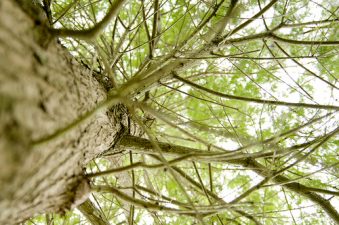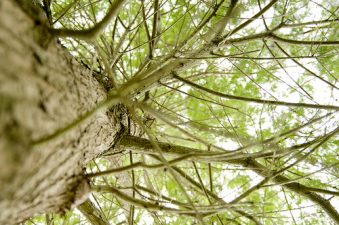According to research by the Department of Energy shade trees can reduce the need for air conditioning by 7% to 40%. If you have a garden, plant a tree. It can decrease the energy you need to cool your space but also provide a place to hang a tire swing, not to mention the offsets.
If you don’t have a garden plant vines in a window box. They grow nicely over security bars. This way you can disguise the ugliness and give yourself beautiful flowers as well!
While plastic awnings offer a basic shade solution, they lack the natural benefits that trees provide in terms of air circulation and ventilation.
One of the key advantages of trees is their ability to facilitate airflow through their branches and leaves. Unlike plastic awnings, which block airflow and can create stagnant pockets of hot air underneath, trees allow breezes to pass through, creating a cooling effect. The movement of air through a tree’s canopy helps to dissipate heat and humidity, making the shaded area feel more comfortable even on the hottest days.
Additionally, trees can act as natural air purifiers, filtering out pollutants and allergens from the air. As air moves through the leaves and branches, particles such as dust, pollen, and pollutants are trapped, improving air quality in the surrounding area. This is especially beneficial for individuals with respiratory issues or allergies, as it can help to reduce symptoms and improve overall well-being.
Read Also: 5 tips for reusing air conditioning water
Moreover, trees play a crucial role in regulating microclimates within their vicinity. By providing shade and cooling the surrounding air, trees help to create a more stable and pleasant outdoor environment. This is particularly important in urban areas, where the urban heat island effect can lead to higher temperatures and increased discomfort. Trees can help to mitigate this effect by shading pavement and buildings, reducing the absorption of heat and lowering ambient temperatures.
In terms of functionality, trees offer several advantages over plastic awnings when it comes to airflow. The natural shape and structure of a tree’s canopy are optimized to maximize airflow and ventilation. The leaves and branches are arranged in such a way as to allow air to move freely through the canopy, creating a gentle breeze underneath. This natural ventilation system helps to keep the shaded area feeling fresh and comfortable, even on still days when there is little wind.
Furthermore, trees provide shade not only for people but also for buildings and other structures. By shading rooftops and walls, trees help to reduce solar heat gain and lower indoor temperatures. This can significantly reduce the need for air conditioning and ventilation, leading to energy savings and lower utility bills. In contrast, plastic awnings only provide shade to the areas directly beneath them, without offering any additional benefits to surrounding structures.




